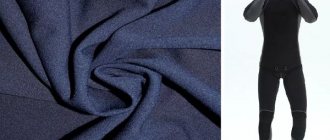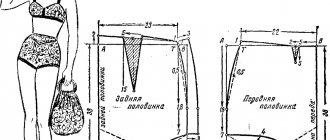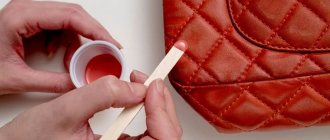Kimono density and fabric color
It is a mistake to believe that kimono comes in only one version. Before choosing a kimono, you need to decide for what purposes it will mainly be used. And it’s better to immediately understand the density of the fabric; it’s important to know some numbers. The density of kimono fabric is measured in the amount of fabric per square meter, measured in ounces (one ounce is 28.35 grams). For example, if the density of a kimono is 10 ounces, then one square meter is 10 ounces or 283.49 grams. You also need to know that a white kimono is made from two types of fabric - bleached cotton and unbleached cotton (with a slight beige tint).
So, now you know that kimonos differ, at a minimum, in the density and color of the material. Now let's decide for what purposes you need a kimono:
- Check with the seller for the density of the kimono! If you practice karate but don't compete much or at all, a kimono made from a lighter fabric, such as 10 ounces, is a good choice. A kimono made from less dense fabric (6-8 ounces) can be used for everyday training, but it is worth noting that a less dense kimono will stick to your body during training and you may experience discomfort when performing the technique. If you don't compete much, it also doesn't matter whether your kimono is made of bleached fabric or not, choose according to your taste and budget.
- If you compete in kata or kumite, then it is best to opt for a kimono made of denser fabric, 12-14 ounces, this density will allow the kimono to keep the material intact during fights and get the “noisy” effect when performing kata, i.e. .e. When performing strikes, you will hear the characteristic loud pops that the kimono makes. As for the color of the fabric, if the kimono is used for kumite, it does not matter whether your kimono is bleached, but for kata it is best to use a thick kimono made of bleached fabric, it will make your appearance more presentable to the judging panel (in kata, the external type of athlete).
Choosing the right kimono for karate training
| Basuku (author) |
Content:
- Some features when choosing a kimono
- Why buy a kimono?
- What is the density of a kimono
- How to choose the thickness of a kimono for karate training
- Material and texture of kimono fabric
- Features of choosing a kimono size
- How to choose the right kimono size
- Which kimono color to choose
- A few additional points when choosing a kimono
A kimono for a karateka is something like a uniform. In the past, a student was allowed to don a kimono only after he had achieved at least minimal success in this type of martial art. Nowadays, a kimono is a special suit for karate training, which is a mandatory attribute even for a beginner.
Some features when choosing a kimono
Choosing the right kimono is not as simple as it might seem at first glance. This is determined, first of all, by the specifics of karate training. It should be understood that karate, unlike training in the gym or fitness classes, is a combat sport that is characterized by enormous impact loads and a large number of repetitions of the same movements. This means that, for example, a tight training suit will lead to bloody abrasions at the very first training session, and an excessively long kimono can result in injury. Such “little things” as incorrectly sewn strings on a kimono need not be mentioned. For girls, this is fraught with the risk of clothes falling open during a sudden and strong movement at the most inopportune moment.
Why buy a kimono?
Before choosing a kimono, you should decide why you are purchasing it. This can be an everyday kimono, a training kimono, or a kimono for performances or fights. For example, a kimono for performances should be festive and snow-white. The training kimono is durable and comfortable for any movement. There are fewer requirements for an everyday kimono. Therefore, you should definitely choose a kimono strictly according to its purpose.
What is the density of a kimono?
The density of any kimono is the weight of one square meter of fabric. Fabric density can be measured in grams per square meter (g/m2), but the unit commonly used is ounce per square meter (oz). For example, if a kimono's weight is 20 ounces, that means that one square meter of kimono fabric weighs 20 ounces, or 567 grams (1 ounce equals 28.35 grams).
How to choose the density of a kimono for karate training?
The choice of kimono fabric density depends on the type of martial arts you will be doing. After all, there are two main types of karate training: karate for fights and sparring, and karate as a set of exercises reminiscent of a martial dance. In the first case, the kimono should hide impacts, be comfortable and not restrict movement, so the fabric density is less and is 8-10 ounces. For the second case, the kimono should fit well on the fighter and make a characteristic clap with each blow, this increases the entertainment value of the karateka’s performance. Here the density of the kimono is chosen significantly higher, about 12-18 ounces. In any case, thicker kimono fabric is needed for training involving grappling and throwing, especially if the fighter has an impressive weight. For domestic manufacturers, the density of karate kimono fabric starts from 200 g/m2 and does not exceed 400 g/m2.
Material and texture of kimono fabric
The texture of the material of a kimono for karate training can be woven or smooth. The kimono for regular training is made from 100% cotton, and the kimono for competitions is made from cotton with the addition of synthetic threads used to strengthen the fabric. Moreover, the percentage of the presence of natural cotton and artificial fibers in kimono fabric can be very diverse - from 90% to 10% to 10% to 90%. Usually polyester fibers are used as synthetic threads. The thinner the kimono fabric, the more it “shrinks” after washing; shrinkage can reach 10%. This must be taken into account when purchasing a kimono, since after the first wash your training suit will fit you like the clothes of a ragamuffin - short sleeves and trousers, a tight jacket. But, if synthetics are added to cotton, then the shrinkage of even thin fabric is insignificant. In addition, synthetic fibers prevent fabric from fading in the sun, increase the strength of the fabric, protect against the effects of mineral and organic acids, absorb moisture well and dry quickly. A thin kimono is used in the summer, and a thick one in the winter.
Features of choosing a kimono size
Remember that kimono size is a relative concept. This is because buttonless clothing comes in a variety of sizes. The choice of length of sleeves and trouser legs is more individual, but there are some tolerances here too. Thus, the kimono is multivariate and universal, since it is not tied to a specific human figure, but on the contrary, it is comfortable and free. The kimono has two sizes: maximum and minimum. Therefore, it can be used by people of different heights and builds.
How to choose the right kimono size?
When choosing the size of a kimono, you should focus on the size of your jacket. But don't think that just one size will suit you. Some people like a loose fit, while others like a tight-fitting one. The kimono must be functional, comfortable and loose, as it is intended for combat. Nothing should pull, rub, or distract. A new kimono should be chosen a size larger than your jacket, since cotton shrinks during use, amounting to 4-5 cm in basic measurements. The height on the kimono label is an approximate range of different options.
Which kimono color should I choose?
The most common color of kimono is white. It symbolizes purity of intentions and determination to learn from scratch. This color is welcome in any karate school. In addition to white, kimonos can have cream or gray colors, common in various schools. But kimonos in black, red, brown and blue colors are not used in classical karate schools. When choosing a color, you should be aware that kimonos made from poorly dyed material will fade from sweat.
A few additional points when choosing a kimono
When purchasing a kimono, pay attention to the presence of thick fabric at the knees of the legs. The length of the kimono sleeves should be such that the wrists are not hidden under the sleeves. When purchasing a thin and light kimono, pay attention to the ties on the belt. They should be well sewn over the entire surface in an “areal” manner. The lapels of the kimono should be reinforced with durable fabric.
Video:
Sewing and shrinkage
It is best to choose fairly loose kimono options, since clothing that is too tight can cause discomfort during training and chafing on the body. At the same time, you should not go to the other extreme and take a kimono that is too wide; it will be difficult to move and perform techniques in it, and there is also a risk of getting tangled and falling. In general, before purchasing a kimono, it is advisable to try it on and try to perform several movements, you should feel comfortable.
After trying on, be sure to check with the seller how many centimeters the kimono shrinks after the first wash. This is a very important point , because... after the first wash, a kimono can shrink from 3 to 15 centimeters, depending on the material and its density. You won't be happy when your new kimono feels too small after the first wash. Choose a larger size kimono, taking into account its shrinkage.
To prevent the kimono from flying open during sudden movements, if a girl chooses a kimono, she needs to make sure that there are ties on the kimono that will prevent the kimono jacket from flying open.
Also, when choosing a kimono, it is important that the sleeves are not so long as to hide the wrists, the seams are tight - such clothes will be stronger and can last longer. The optimal sleeve length for karate training is considered to be 3/4 of the full length.
Fabric structure
The composition of the fabric and its texture also play an important role for different types of martial arts. Kimonos come in both smooth and woven fabric, thick and thin, from natural materials and with synthetic additives.
It is best to use a cotton kimono for karate training without adding synthetic materials; such a kimono is convenient if you need to practice techniques during regular training: the body will not overheat in it and will be able to breathe freely.
Kimonos with the addition of synthetics, such as polyester, are also sometimes used. The ratio of cotton to synthetics can vary greatly and can be either 1 to 10 or 10 to 1, which is something you should pay attention to when purchasing. It is considered optimal to add no more than 10-20% synthetics. It should be noted that kimonos with the addition of synthetic materials are less susceptible to shrinkage. This kimono dries faster and absorbs moisture well.
Embroidery on kimono
You can often find different embroideries on karate kimonos, let’s figure out what they mean.
Embroidery on the left side of the jacket with the organization's emblem:
Depending on the organization, it happens (the most popular):
— Kyokushankai (Kekushinkai)
— Shinkyokushin (Shinkyokushinkai)
— Kyokushin kan
Patch on the bottom of the jacket (also used on the pants and waistband)
Also, depending on the organization, there are the following types (the most popular):
Kyokushankai (Kekushinkai) - old version
Kyokushankai (Kekushinkai) - new version (from 2021)
— Shinkyokushin (Shinkyokushinkai)
— Kyokushin kan
Japanese embroidery of the athlete's name on the jacket
Embroidery on the left shoulder
A patch with the emblem of the organization in which the athlete trains is placed on the left shoulder
Also on the left shoulder you can often find “Ichigeki” embroidery - this is the emblem of the company that produces the kimono, meaning “Win with one blow”
Embroidery on the right shoulder
On the right shoulder there is embroidery with the emblem of the school or club in which the athlete trains
What are kimonos made from?
Kimonos are almost always made from cotton. It is durable, well breathable and does not cause allergies in the athlete. But natural materials have shrinkage, so it’s better to immediately ask the seller if it’s included or take it with a reserve.
You can find material made from synthetic fabrics, and sometimes cotton, which is mixed with synthetics. This is also a good shape, it shrinks less after washing and does not need to be ironed. However, synthetics almost do not allow air to pass through and do not absorb sweat, and this is fraught with discomfort and allergies.
It is important to remember about density. The best is 350 grams per square meter. In such fabric it is convenient for an athlete to strike with both hands and feet, and you can also be sure that the jacket will tear when throwing. The collar, sleeves and knees of the kimono will be reinforced with additional inserts so that the fabric does not quickly fray.
The jacket often has additional ties to prevent it from falling open. It is also better to take a kimono with special connectors through which the belt is threaded. This is necessary because of the specifics of hand-to-hand combat, in which athletes use brute force and throws. And because of the connectors, the belt will not fall off the athlete.
It is important that the kimono is accredited by the federation and passes the requirements of the rules. Sleeves should not cover the wrists, and pants should be at ankle level.
Pay attention before buying a kimono, and find out from the seller whether the belt (mostly white) comes with the kimono. If it doesn't work, you'll have to buy it separately.











